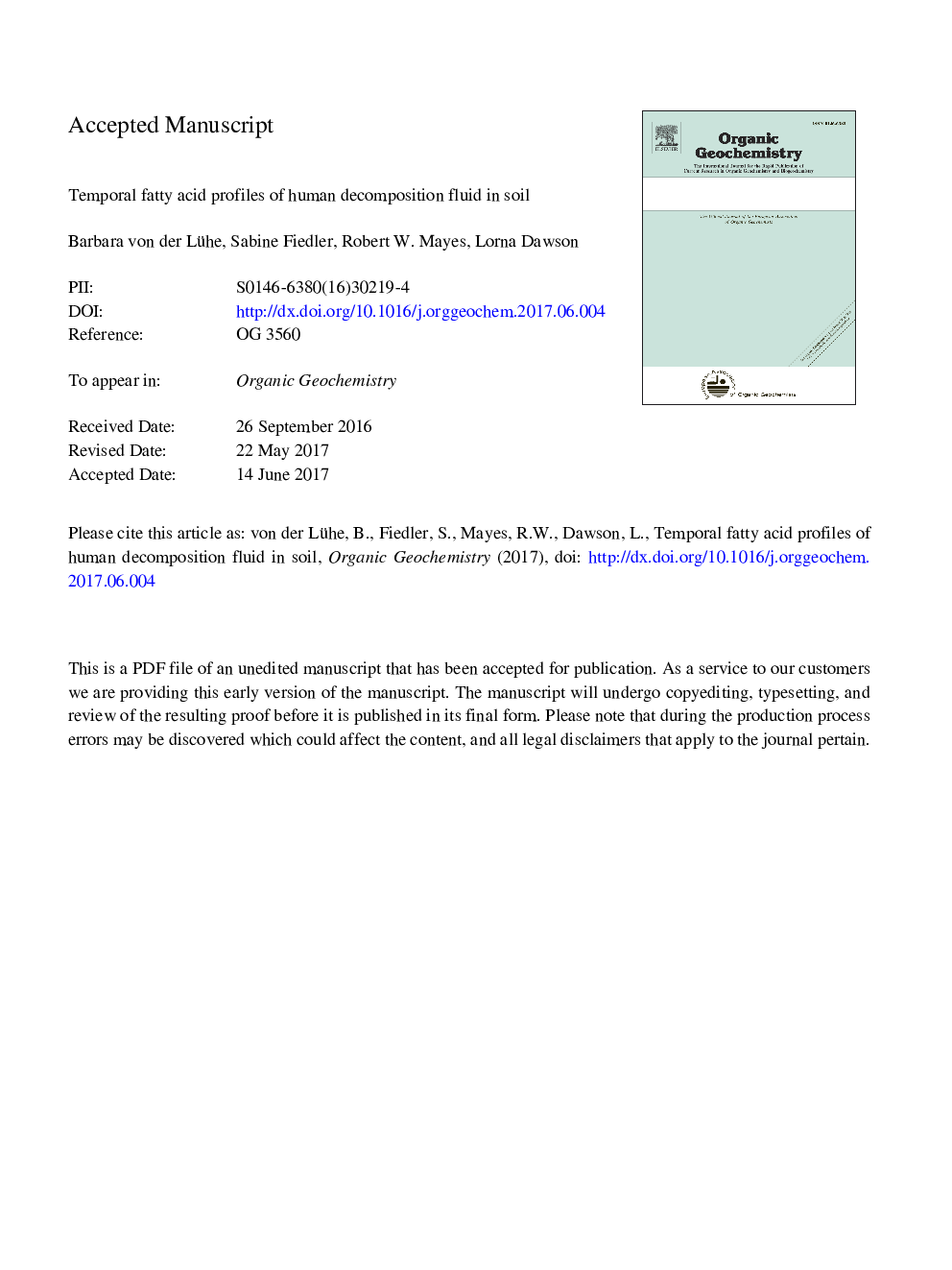| Article ID | Journal | Published Year | Pages | File Type |
|---|---|---|---|---|
| 5161356 | Organic Geochemistry | 2017 | 36 Pages |
Abstract
We studied the changes in concentration and relative abundance of human-derived fatty acids (FAs) in soil over a period of one year. The study is based on analysis of soil underneath a human body that lay on the soil surface for 18Â days before it was discovered. Soil samples were taken when the body was removed, and also 358Â days later. Large amounts of the total FA concentration at the start of the measurement period were still present one year after the removal of the body. The FA profile suggested that extensive saturated FA reduction occurred during the first 18Â days after deposition. 10-Hydroxystearic acid and FA salts, which are characteristic of adipocere, were abundant in all soil samples from beneath the body. Myristic acid and 10-hydroxystearic acid concentration declined over time. It was therefore concluded that FAs, still detectable one year after the temporal deposition of a body, can serve as an important indicator of human decomposition fluid in soil. Furthermore, the study suggests that in-situ processes such as the formation of adipocere promoted the preservation of human-derived FAs over the period of the study.
Related Topics
Physical Sciences and Engineering
Chemistry
Organic Chemistry
Authors
Barbara von der Lühe, Sabine Fiedler, Robert W. Mayes, Lorna Dawson,
